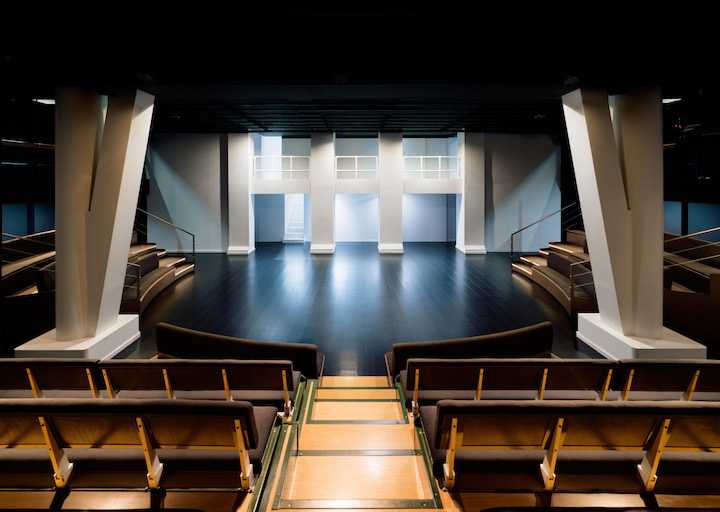Teatre Akadèmia adds Amate Audio SR
- Details

Alongside new video and lighting systems, a comprehensive Amate Audio sound installation - comprising loudspeakers, power amplifiers and digital audio processors from the company - has provided the venue with both a new FOH PA and surround sound EFX capabilities.
Award winning theatre sound designer Roc Mateu and Amate Audio’s industrial designer Guiu Llusá worked together to address the theatre’s specific sound design challenges; in particular with respect to the design of the venue, incorporating a ‘thrust stage’ with raked seating on three sides. “The sound design objectives were those required to provide a room with the distinct layout of the Teatre Akadèmia,” says Llusá, “With sound equipment of an appropriate scale, with comparable performance capabilities to that used in large scale auditoria.”
The resultant sound design is effectively two discrete systems, operating together within a matrix sound design; one the FoH dialogue PA, comprising larger full-range cabinets, and the other a wider ‘boundary’ installation, sited around the perimeter of and firing into the room, comprising smaller cabinets providing a dynamic surround sound EFX capability.
N12P and S6P models from Amate Audio’s Nítid series of compact, high-performance, dedicated venue installation loudspeaker systems were selected; two-way designs of relative scale, engineered to provide a common high-intelligibility output. Six of the larger N12P provide the FOH dialogue system, hung in front of and on either side of the stage.
The surround sound EFX component comprises 12 of the smaller S6Ps, configured in three groups: one of four S6Ps covering the front seating rows, and two groups of two S6Ps each for each of the side tiers. Three N18WP subs are assigned to these; one to the front seating group and one each to the two groups on either side.
“The surround system allows you to modify the sense of position and proximity of sound effects,” says Llusá. “If you want to simulate a large space in a theatre of such small dimensions the audience must be surrounded by loudspeakers with separate sends, and discrete delays and power levels. The sends being separately controlled to determine where a sound effect is located and plays out within the simulated ambience.”
“The renovation was envisaged as transforming the venue’s technical production capabilities via multi-media technologies, as a means of expanding artistic possibilities,” explains Mateu. “The objective role of sound design in this scheme is to evolve beyond mere amplification to being a dynamic, illusionary creative tool. The means of achieving this were required to be as seamless and unobtrusive as possible. With loudspeaker systems of this level of performance and compact form-factor, it is possible within a small studio theatre, to provide the type of sound design capabilities expected of a major commercial production.”
















